Key Takeaways
Key components of design include intuitive onboarding, easy navigation, personalization, customer support, and ratings for trust-building.
The step-by-step process involves research, user personas, wireframing, UI/UX design, prototyping, accessibility, branding, and scalability.
Tools like Figma, Sketch, Adobe XD, and Canva help with UI/UX design, while Marvel, Axure, UsabilityHub, and ProtoPie aid prototyping.
AI enhances app design through personalization, smart search, dynamic visuals, chatbots, and adaptive UX powered by real-time insights.
The cost to design a food delivery app ranges from $5,000 to $30,000+, depending on complexity, features, and design quality.
Work with JPLoft for food delivery app design that blends modern UI/UX, making market-ready apps that boost long-term success.
"Food is the most primitive form of comfort." – Sheila Graham
That comfort has found a new home in the digital age. The food delivery industry has witnessed an explosive boom in recent years, which is reshaping how people order meals and enjoy dining from home.
While technology powers these platforms, it’s the design that truly shapes user experience and determines customer loyalty.
A well-crafted food delivery app design blends simplicity, aesthetics, and functionality, ensuring users can browse, order, and track food effortlessly. From intuitive navigation and eye-catching visuals to smooth checkout processes, every design element influences satisfaction and retention.
In this blog, we will explore the essential steps to design a food delivery app, the required tools, challenges, and innovations that go into creating a successful app. Remember, in such a competitive space, thoughtful design is a necessity.
All About Food Delivery App Design
When it comes to food delivery apps, design is more than just about looks. It directly influences usability, engagement, and customer satisfaction. A well-thought-out design ensures that users can browse restaurants, explore menus, and place orders seamlessly, all while enjoying an intuitive experience.
The most successful food delivery apps prioritize simplicity and clarity. A well-planned food delivery app UI/UX makes ordering meals convenient and provides a seamless user journey from browsing to checkout.
The process to design a food delivery app relies heavily on user experience (UX) and user interface (UI) principles to ensure customers stay engaged and satisfied.
Clean layouts, well-structured categories, and easy-to-read fonts make browsing effortless, while appealing visuals of dishes enhance appetite. Color psychology also plays a big role, as bright, energetic colors like red and orange often stimulate hunger, while greens emphasize freshness and health.
Ultimately, food delivery app design is about balancing aesthetics with functionality. By blending intuitive navigation, appetizing visuals, and thoughtful personalization, businesses can create experiences that not only satisfy hunger but also build lasting customer loyalty.
Meanwhile, modern design for food delivery app trends like micro-interactions, like animations for adding items to the cart, adds delight to the process.
Key Components of Food Delivery App Design
Designing a food delivery app requires more than just attractive visuals. It’s about creating a smooth, user-friendly experience that guides customers effortlessly from browsing to checkout.
Below are the key components every successful food delivery app interface should include.
- Intuitive Onboarding: A simple and fast onboarding process sets the tone. Features like social login, one-tap sign-up, and guided walkthroughs ensure users quickly understand how the app works without frustration.
- Easy Navigation and Search: Clear navigation menus, smart filters (cuisine, price, ratings), and a powerful search bar help users find meals instantly. The fewer clicks needed, the higher the order conversion rate.
- Restaurant and Menu Display: High-quality images, concise dish descriptions, and transparent pricing make menus engaging. Further categorizing (popular, healthy options, etc.) items simplifies decision-making.
- Smooth Ordering and Checkout: A frictionless ordering flow with minimal steps, flexible payment options, promo code fields, and transparent delivery fees enhances user trust and convenience.
- Real-Time Order Tracking: Live tracking maps, delivery time estimates, and push notifications keep customers informed, reducing anxiety and improving satisfaction.
- Personalization Features: Tailored recommendations based on order history, dietary preferences, or location make the app feel customized and user-centric.
- Customer Support Integration: In-app chatbots, call options, or help centers ensure users can resolve issues quickly, improving trust and overall satisfaction.
- Reviews and Ratings System: Allowing users to rate dishes, restaurants, and delivery partners creates transparency, builds credibility, and helps future customers make informed decisions.
A well-designed app should be intuitive, fast, and functional while attractive in appearance. By focusing on these key components, it ensures that the user interface of a food delivery app attracts users and also keeps them coming back for more.
To translate these components into a functional and engaging product, it’s essential to follow a clear, step-by-step design process. Next, let’s explore how to effectively design a food delivery app in simple steps that combine these elements into a seamless user experience.
How to Design a Food Delivery App?
Understanding how to design a food delivery app goes beyond creating attractive pages. It’s about building an experience that feels intuitive, reliable, and enjoyable for every user. The design of a food delivery app involves research, creativity, and user-centered thinking.
Below is a complete guide to food delivery app design that covers every stage of designing it:
Step 1: Conduct Market Research and Define Goals
The first step of how to design a food delivery app is understanding the market and defining what your app will bring to the table, keeping in mind that the industry is already crowded with apps like DoorDash being created.
-
Analyze competitor apps to identify strengths and weaknesses.
-
Look for gaps in design, such as confusing navigation, hidden offers, or limited personalization.
-
Define your app’s unique value proposition (UVP): will it focus on affordability, premium dining, health-conscious meals, or ultra-fast delivery?
Best Practice: Always validate your food delivery app ideas through customer surveys or focus groups to ensure your design aligns with user expectations.
Step 2: Understand User Personas
A successful app design must be rooted in the needs of its target users. Creating user personas helps in visualizing the people who will interact with your app and how to start an online food delivery business.
-
Identify demographics: age, occupation, income level, and tech-savviness.
-
Map pain points: long checkout processes, cluttered menus, or a lack of healthy options.
-
Define goals: quick meals for students, family bundles for households, or calorie tracking for fitness enthusiasts.
Best Practice: Keep personas updated as user behavior evolves. AI-driven analytics can help track changing food preferences in real time.
Step 3: Wireframing the User Journey
Mobile app wireframes serve as the blueprint of your app design. They outline how users move through the app, from onboarding to order completion.
-
Sketch low-fidelity wireframes showing login, home, search, menu, cart, and tracking screens.
-
Define logical flows: Example, onboarding → restaurant discovery → food selection → checkout → tracking.
-
Map out multiple journeys (first-time user vs. repeat customer).
-
Tools: Figma, Sketch, Adobe XD, or Balsamiq for early wireframing.
Best Practice: Focus on functionality first, avoid adding colors or images until the flow feels smooth.
Step 4: Craft UI Design Elements
UI design defines the look and feel of your app. It should be visually appealing while guiding users naturally through actions.
-
Use appetizing food images and consistent branding colors.
-
Apply color psychology: red and orange stimulate hunger, and green emphasizes health.
-
Ensure fonts are easy to read and scalable across devices.
-
Keep CTAs (like “Order Now” or “Track Order”) bold and prominent.
Best Practice: Design for thumb-friendly navigation, as most users will interact with one hand.
Step 5: Add UX Enhancements
UX is about making the app easy, efficient, and enjoyable. Enhancements improve flow and minimize friction.
-
Add one-tap reorder for frequent meals and add smart filters.
-
Offer saved addresses and payment options for faster checkout.
-
Integrate loyalty programs or gamification (reward points, badges).
-
Use micro-interactions like animations when adding items to a cart.
Best Practice: Keep the ordering process within three to five taps to maximize conversion rates.
Step 6: Prototyping and User Testing
Before finalizing, build interactive mobile app prototypes to test how users actually interact with your design.
-
Create clickable prototypes using tools like Figma, InVision, or ProtoPie.
-
Gather user feedback on navigation, readability, and clarity of icons.
-
Tools for Testing: Maze (for analytics), Lookback (for live sessions), and UsabilityHub/Lyssna (for surveys).
Best Practice: Run A/B tests with two different versions to see which performs better in terms of task completion and satisfaction.
Step 7: Optimize for Accessibility and Responsiveness
Accessibility is often overlooked but crucial for inclusivity. While creating an app, responsive design ensures the app works across different devices and screen sizes.
-
Provide larger fonts and high-contrast options.
-
Add voice commands or screen reader support.
-
Test layouts across iOS, Android, tablets, and web versions.
Best Practice: Follow WCAG (Web Content Accessibility Guidelines) and conduct accessibility audits regularly.
Step 8: Iterate and Refine Continuously
Design is never final. User expectations evolve quickly, and your app must adapt.
-
Track analytics like drop-off points, time spent on screens, and order completion rates.
-
Collect user feedback through in-app surveys or review prompts.
-
Regularly update the design with new features or trends (AI-based personalization, AR menus).
Best Practice: Adopt an agile design approach, where updates are rolled out in small, testable increments rather than big, disruptive changes.
Step 9: Integrate Branding and Visual Identity
Beyond usability, your mobile app design must reflect your brand identity. This step ensures your app feels unique and builds trust with users. This integration will also help to monetize the food delivery app.
-
Define your brand colors, fonts, and tone of voice.
-
Ensure the logo, illustrations, and icons align with your brand personality.
-
Keep the design consistent across all platforms (mobile, tablet, web).
Best Practice: Create a design system or style guide to design a food delivery app to maintain consistency as your app grows.
Step 10: Plan for Scalability and Future Trends
Design must not only solve today’s problems but also adapt to future user needs and technologies. Scalability ensures your app can handle new features without cluttering the design.
-
Leave space in your design for upcoming features like dark mode, AI, or AR food previews.
-
Choose flexible UI patterns that can scale as your offerings expand.
-
Regularly evaluate tech and design trends to keep your app competitive.
Best Practice: Adopt a modular design approach, making it easier to plug in new features without redesigning the entire app.
From market research and user personas to food delivery app UI/UX design, prototyping, accessibility, and continuous iteration, every step plays a critical role in designing a successful UI/UX of a food delivery app. When followed closely, these steps design a powerful driver of customer retention, loyalty, and growth in the highly competitive food delivery market.
While following the right steps to design a food delivery app that is user-friendly, modern technology takes design even further. This is where AI steps in, enhancing personalization, navigation, and overall user experience of a food delivery app beyond traditional design methods.
Can AI Be Helpful in Designing a Food Delivery App?
Yes, AI is helpful in designing the food delivery app. AI has emerged as a game-changer in the app development sector, and food delivery platforms can leverage it for both functionality and design. Additionally, it helps transform how to design a food delivery app from being a simple ordering platform into a smart, personalized, and intuitive ecosystem.
1. Personalized User Experience
AI analyzes customer behavior, order history, and browsing patterns to offer tailored recommendations. For example, building an AI app might highlight healthier alternatives during breakfast hours. This creates a sense of connection, making users feel the app truly understands their requirements.
2. Smarter Search and Navigation
Users can type or voice-search for their item and instantly get relevant results. Predictive search suggestions and adaptive menus help users find what they want quickly, reducing friction. This level of intelligence ensures faster decision-making and boosts overall satisfaction.
3. Dynamic Visual Optimization
AI can identify which images, colors, or layouts drive higher conversions and automatically adjust them. For instance, showing high-resolution food images at the right time of day can spark cravings and improve click-through rates. Over time, this leads to a more conversion-focused and data-driven design.
4. AI-Powered Chatbots and Support
Integrating AI chatbots into design enables instant, round-the-clock support. From tracking orders to resolving payment issues, these bots make the support experience seamless while reducing wait times. The conversational style also humanizes the app, keeping interactions natural and engaging.
5. Adaptive UX with Real-Time Insights
AI monitors user behavior in real time and adjusts the interface dynamically. If users repeatedly abandon the cart at checkout, the app can simplify the flow or highlight alternative payment options. This adaptability ensures continuous improvement without the need for constant manual redesign.
The integration of AI enhances both aesthetics and functionality for those researching how to design a food delivery app.
It also ensures that the app adapts intelligently to each user’s needs, creating a truly seamless, human-like, and enjoyable food ordering experience.
Understanding this paves the way to discover the practical tools and technologies that the best mobile app development company in the UK uses to bring these sophisticated, user-friendly app designs to life.
What Tools Can Be Used to Design a Food Delivery App?
To design a food delivery app, it requires a blend of creativity, functionality, and efficiency. The right tools help designers craft intuitive user interfaces, build interactive prototypes, and ensure a smooth user experience across devices.
Below are widely used tools to design a food delivery app:
A] UI/UX Design Tools:
Creating a food delivery app requires the right mix of UI/UX design tools that simplify workflows, enhance collaboration, and ensure a polished user experience.
► Figma
Figma is a cloud-based design tool effective for distributed teams, allowing multiple designers and developers to work together in real time.
Key Features: Real-time collaboration, reusable design components, responsive layout grids, easy prototyping, and integration with developer handoff plugins.
► Sketch
A vector-based design tool popular for creating pixel-perfect UI designs and a favorable tool for building scalable, design system-driven projects.
Key Features: Intuitive interface, reusable symbols, customizable plugins, powerful vector editing, and seamless integration with prototyping tools.
► Adobe XD
A versatile design platform tailored for app design, ideal for designers already working within the Adobe Creative Cloud ecosystem.
Key Features: Drag-and-drop UI kits, auto-animate for transitions, voice prototyping, repeat grid for scaling designs, and easy sharing with stakeholders.
► Canva
Not primarily a UI design tool, but useful for supporting app visuals like banners, promotions, and ads. Perfect for individuals with less to no experience in designing.
Key Features: Pre-built templates, drag-and-drop editor, easy resizing for platforms, and a huge asset library.
B] Prototyping and User Testing
The next step is prototyping and user testing. These tools allow designers to stimulate real-world interactions, validate design decisions before development even begins.
► Marvel
A user-friendly prototyping tool ideal for quickly testing design flows and gathering feedback without complex setups.
Key Features: Clickable prototypes, usability testing features, design handoff for developers, and integration with collaboration tools.
► Axure RP
A powerful tool for creating high-fidelity prototypes with advanced interactions. Best for testing complex user journeys like multi-step checkouts.
Key Features: Conditional logic, adaptive views, form elements, and team collaboration features.
Axure is best for testing complex user journeys like multi-step checkouts in food delivery apps.
► UsabilityHub (now Lyssna)
A remote user testing platform perfect for validating design choices with a larger pool of users before investing in development.
Key Features: First-click tests, navigation flow testing, preference tests, and quick surveys.
► ProtoPie
ProtoPie allows designers to create highly interactive, device-specific prototypes. Helps to replicate real-world behaviors, offering more accurate testing experiences.
Key Features: Sensor integration (tilt, voice, gestures), timeline-based interactions, and cross-device testing.
Choosing the right design tool depends on the team’s requirements. Most businesses combine these tools while developing a food delivery app for the best results.
With these powerful resources in hand, let’s explore real-world case studies of renowned food delivery apps to see how thoughtful redesigns have dramatically improved their user experience and business success.
Case Studies of Top Food Delivery Apps: How They Proceed With Design!
Leading food delivery apps have dramatically improved user experience and business outcomes through strategic design enhancements.
Here are some notable case studies illustrating how thoughtful redesign of the UI/UX of a food delivery app has elevated these platforms.
1] KFC – Simplifying and Optimizing the Layout of App
KFC faced dependency on third-party aggregator apps and poor user experience on its own platform. A regionally personalized redesign led to:
-
22% increase in conversion rate.
-
Over 50% of total orders were routed through KFC's app (up from 10%).
-
60% increase in repeat purchases.
-
30,000+ daily orders handled via the app.
2] Pizza Hut – Improving Navigation with Modern Design
Pizza Hut's digital presence suffered from an outdated, hard-to-navigate app. After a UX/UI overhaul:
-
50,000 new app downloads
-
30% higher conversion rates
-
Improved customer engagement
-
Increased order placements and app screen time
3] Domino’s – Integrating Easy, Simple Checkout Process
Domino’s saw high bounce rates and poor retention due to complex ordering and subpar UI/UX. Their comprehensive redesign resulted in:
-
23% boost in mobile app conversion rate.
-
Drop in bounce rates.
-
Improved engagement and more time spent tracking orders.
4] Grubhub – Restructuring Menu Components & Design System
GrabFood's redesign targeted issues with navigation, filtering, and menu visuals. Key improvements included wider food images, bottom navigation, and robust customization. These changes improved app retention by:
-
Simple filter choices and consistency across menu designs.
-
Clearer component distinction.
-
Increased user retention of the app with improved accessibility.
5] Deliveroo – Homepage Clarity and Filtering Improvements
A UX redesign concept addressed Deliveroo’s ambiguous category labeling, hidden price indicators, and clunky location display. Solutions included better font hierarchy, clear pricing symbols, and real address display. Results:
-
Categorization became clearer and visually distinct.
-
Users could quickly assess price levels using simple symbols.
-
Reduced confusion when selecting delivery location, improving trust and usability.
These real-life cases of redesigning the food delivery app demonstrate how investing in smart, user-focused food delivery apps UI/UX. It directly results in better customer satisfaction, higher retention, and stronger growth for food delivery brands.
Understanding the cost involved in designing a food delivery app helps businesses set realistic expectations and budget for building an effective, user-centric platform.
Let’s now dig into the key factors that influence the cost to design a food delivery app.
Cost to Design a Food Delivery App
The cost to design a food delivery app typically ranges between USD 5,000 to USD 30,000. The cost to design a food delivery app can vary significantly depending on complexity, features, design quality, and the location of the design team.
► Cost Breakdown Table of Food Delivery App Design
Below, we have broken down the cost of designing each section/page of the food delivery app for your ease:
|
Feature/Design Area |
Design Complexity |
Estimated Cost Range (in USD) |
|
Onboarding Screens |
Simple layouts with login/signup options |
$500 – $1,500 |
|
Home & Search Interface |
Filters, categories, search bar, smart UI |
$1,000 – $3,000 |
|
Restaurant & Menu Pages |
High-quality images, item descriptions, and pricing |
$1,500 – $4,000 |
|
Cart & Checkout Flow |
Multi-step checkout, payment integration, promo codes |
$2,000 – $5,000 |
|
Real-Time Order Tracking |
Map integration, ETA, live status updates |
$2,000 – $6,000 |
|
Personalization Features |
AI-based recommendations, custom suggestions |
$3,000 – $7,000 |
|
Micro-Interactions & Animations |
Smooth transitions, UI animations |
$1,500 – $4,000 |
|
Accessibility & Responsiveness |
Adaptive layouts, voice support, contrast design |
$1,000 – $3,000 |
|
Prototyping & User Testing |
Interactive prototypes, usability testing |
$1,500 – $5,000 |
|
High-End Branding & Visual Identity |
Custom icons, advanced UI themes, and unique branding |
$3,000 – $6,000 |
► Estimated Total Designing Cost Based on App Complexity
Depending on the complexity of the food delivery app design, the cost may vary:
1. Basic Design
Estimated Total Designing Cost in USD: $5,000 – $10,000
Includes: Essential wireframes, simple UI screens, standard navigation, and a clean layout suitable for startups testing their idea.
2. Mid-Level Design
Estimated Total Designing Cost in USD: $10,000 – $20,000
Includes: Adds personalized features like custom branding, advanced UI elements, interactive prototypes, and smoother transitions for a polished experience.
3. High-End Design
Estimated Total Designing Cost in USD: $20,000 – $30,000+
Includes: Highly customized visuals, micro-interactions, AI-driven personalization, animations, and accessibility features to match global app standards.
Investing in high-quality design is crucial since it directly impacts user experience, customer retention, and brand perception. While development brings the food delivery app to life, it’s the design that determines whether users enjoy and trust the platform enough to become regular users.
Knowing the design cost is only one side of the equation. The true test lies in overcoming the UI/UX challenges that shape user satisfaction, engagement, and retention in the long run.
Challenges Faced for Food Delivery App UI/UX
Designing the UI/UX comes with several food delivery app development challenges that can directly affect how customers use and perceive the platform. The main difficulties include
Challenge 1: Balancing Simplicity with Feature-Rich Design
Food delivery apps must offer multiple food delivery app features like search, filters, and order tracking, with a simple interface. Overloading users with too many elements can cause confusion and higher drop-off rates.
Solution: Use minimalistic layouts, prioritize essential features on the home screen, and provide secondary options in collapsible menus or sidebars.
Challenge 2: Ensuring Seamless Navigation
Users expect to reach their desired meal within just a few taps. Poor navigation, unclear menus, or hidden options can frustrate users, making them abandon the app and switch to competitors.
Solution: Apply a clear navigation hierarchy, use intuitive icons, and integrate smart filters to help users quickly find what they need.
Challenge 3: Maintaining Consistency Across Devices
Food delivery apps are used across smartphones, tablets, and sometimes desktops. Ensuring consistent layouts, responsiveness, and seamless performance across platforms requires additional design efforts.
Solution: Adopt responsive design frameworks and run cross-device testing to guarantee consistent experiences regardless of screen size or device type.
Challenge 4: Optimizing Visuals Without Slowing Performance
High-quality food images attract customers, but heavy visuals can slow load times. Balancing visual appeal with app speed is critical, since delays of just a few seconds impact customer satisfaction.
Solution: Use optimized image formats (like WebP), apply lazy loading, and compress files without compromising visual quality to maintain speed.
Challenge 5: Addressing Accessibility Concerns
Many apps overlook accessibility for visually impaired or elderly users. Designing with larger fonts, voice assistance, and high-contrast options ensures inclusivity but requires extra planning and testing efforts.
Solution: Follow WCAG (Web Content Accessibility Guidelines) and conduct accessibility audits to ensure usability for differently-abled users.
Addressing these challenges involves simplifying flows, adding robust customization, ensuring clear feedback, optimizing mobile design, and creating visually pleasing, accessible interfaces. User trust is easily lost if app logic is inconsistent or key features underperform.
Partner With JPLoft and Design a Food Delivery App
In today’s competitive digital market, the success of a food delivery app depends not just on functionality but also on a seamless, engaging, and user-friendly design.
At JPLoft, we specialize in crafting food delivery app designs that balance aesthetics with usability, ensuring every click, swipe, and interaction feels effortless for your customers. Our team of expert designers focuses on creating intuitive interfaces that make browsing menus, tracking orders, and completing checkouts smooth and enjoyable.
By combining modern design trends, AI-driven personalization, and accessibility features, we at JPLoft build apps that cater to diverse user needs while keeping them visually appealing. Whether you’re a startup aiming for a minimal MVP design or an established enterprise seeking a complete redesign, JPLoft tailors solutions that match your business goals.
By partnering with JPLoft, an experienced food delivery app development company, you gain a strategic partner committed to turning your vision into a scalable, market-ready product.
Conclusion
Understanding how to design a food delivery app is a multi-layered process that requires equal focus on usability, aesthetics, and long-term scalability. From researching market gaps and defining user personas to building wireframes, refining UI/UX, and conducting user testing, every step contributes to creating an app that customers will love to use repeatedly.
Accessibility, branding, and future scalability ensure the design remains relevant and inclusive, while continuous iteration helps adapt to changing user expectations. By following these structured steps to design a food delivery app, businesses can create a food delivery app that not only looks great but also delivers seamless functionality.
In today’s competitive market, a thoughtful design can be the differentiator that boosts engagement, retention, and overall success.
FAQs
To design a food delivery app, start with thorough market research and defining your business model. Next, list essential features like user registration, menu browsing, and order tracking. Create wireframes focusing on intuitive UI/UX design. Develop backend and frontend systems robustly. Test extensively, then launch and continuously improve based on user feedback.
Core components include user-friendly navigation, appealing visuals, clear CTAs, personalized recommendations, real-time order tracking, secure payments, and a smooth checkout process. Each element works together to create a reliable and enjoyable ordering experience.
Popular tools include Figma, Sketch, and Adobe XD for UI/UX design, and InVision or ProtoPie for prototyping. For testing, platforms like Maze or Lookback help gather real user feedback to refine designs.
Design costs typically range from USD 5,000 to USD 25,000, depending on complexity, number of screens, and customization. Advanced features like AI personalization or AR menus may increase the investment significantly.
AI enhances personalization by suggesting dishes based on user behavior, improves customer service with chatbots, and streamlines navigation. It creates smarter, more adaptive designs that increase engagement and conversions over time.





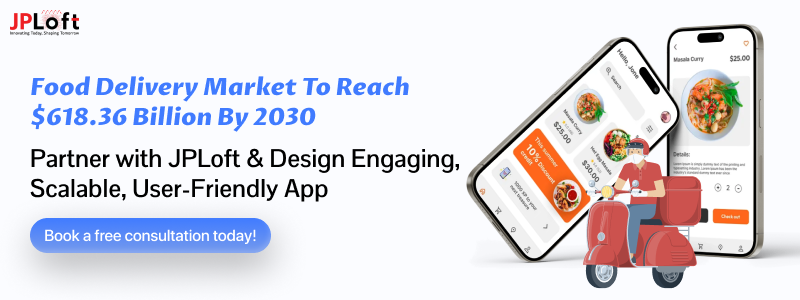
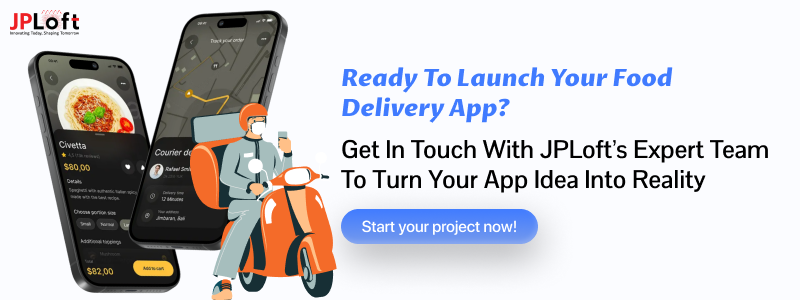

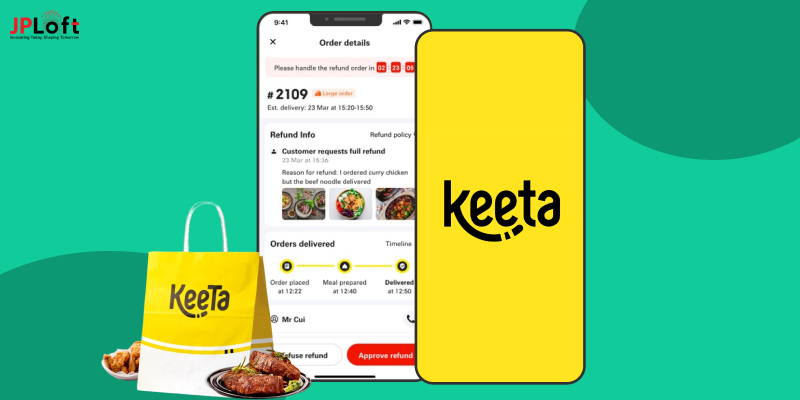
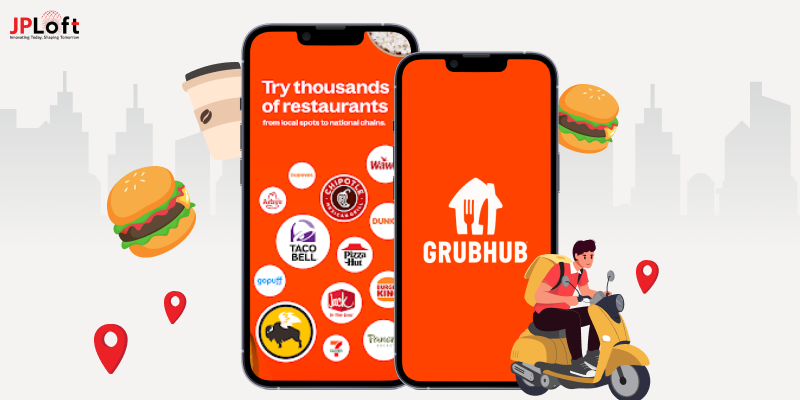
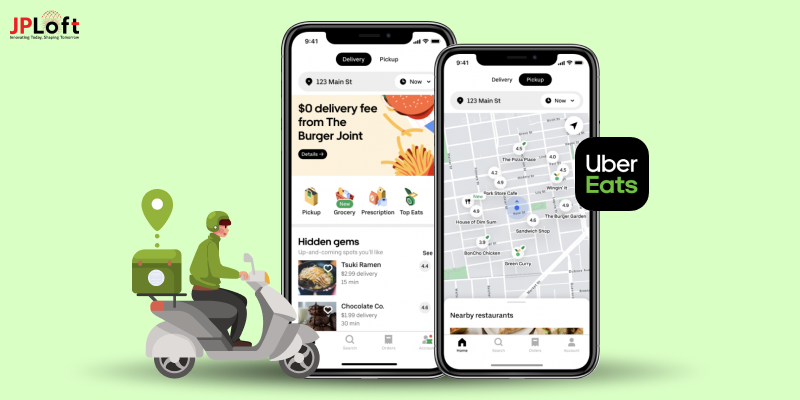


Share this blog